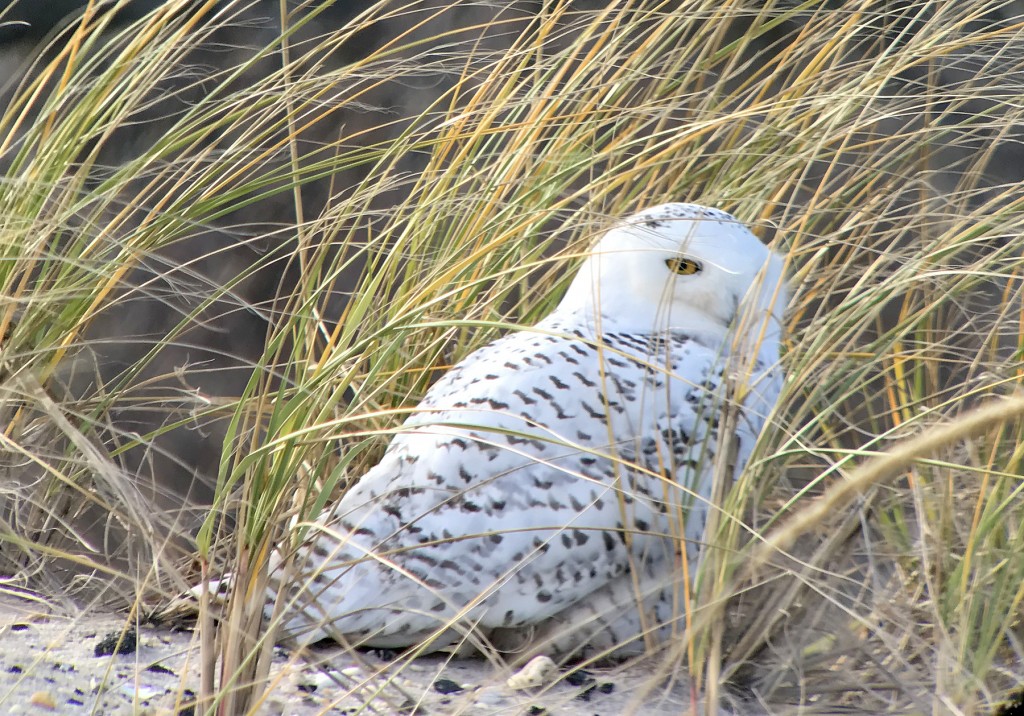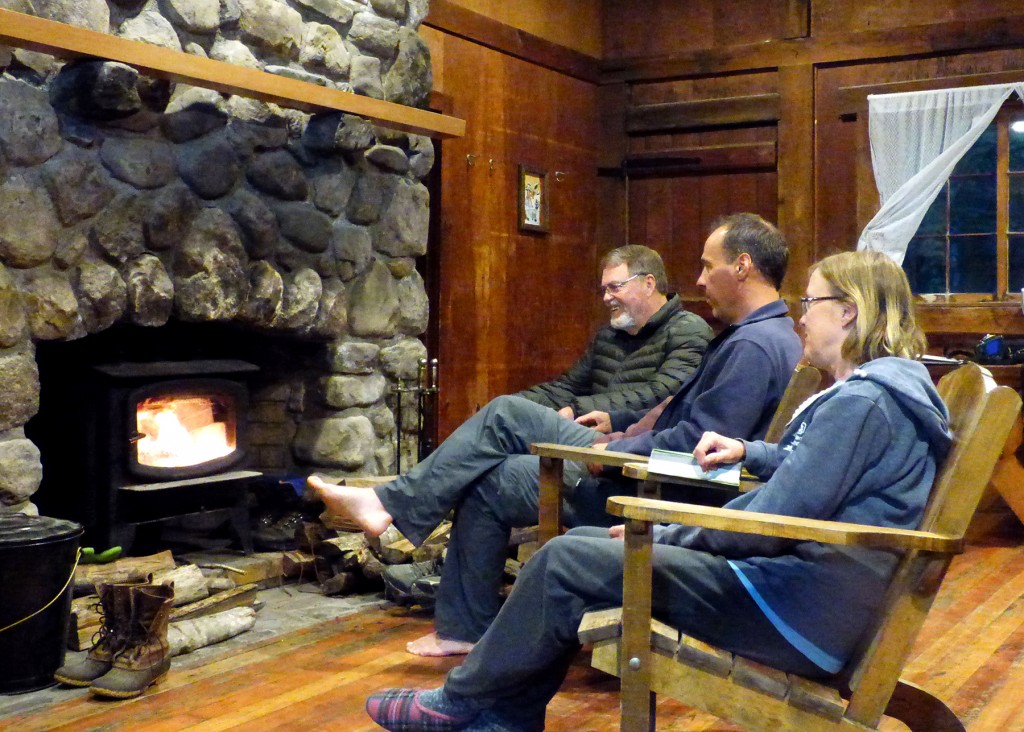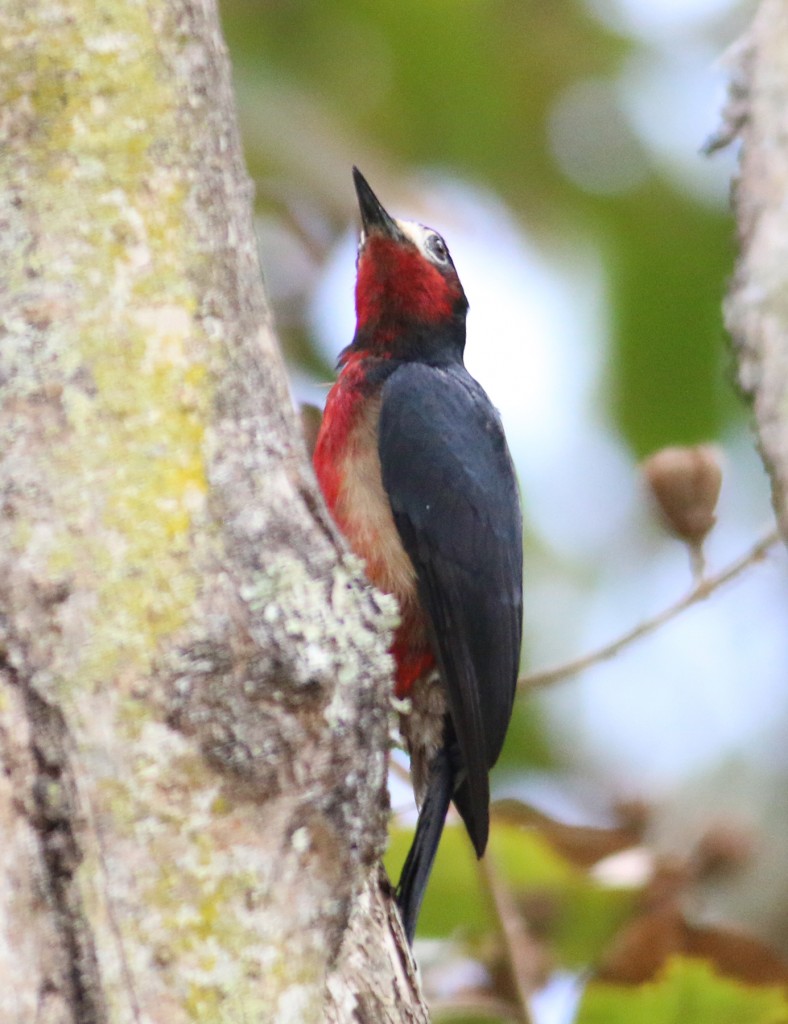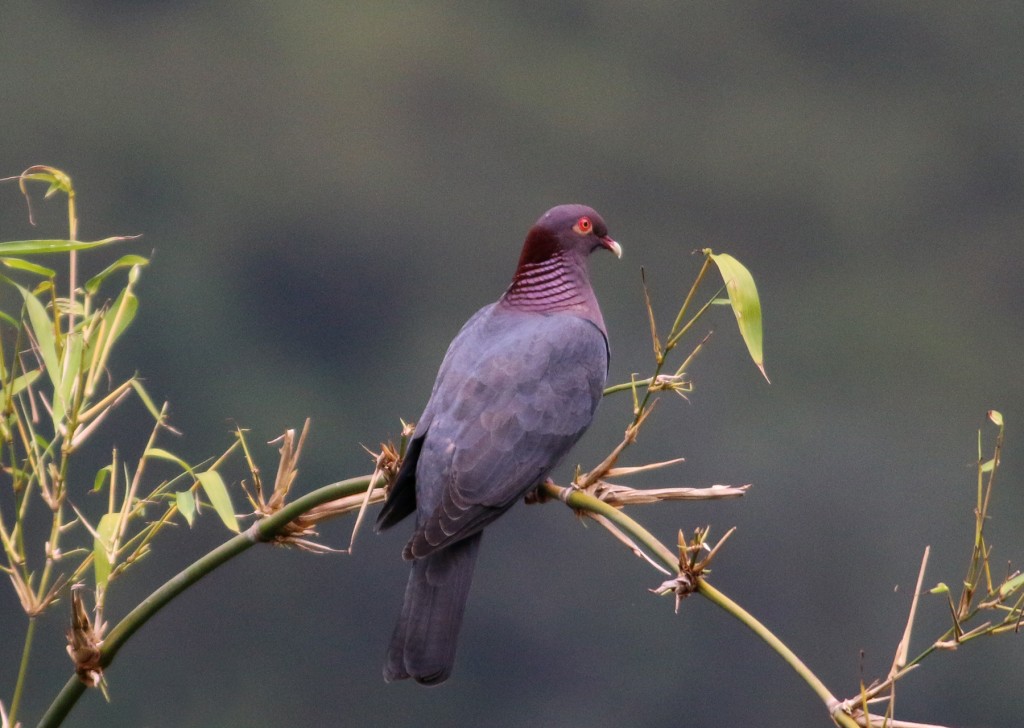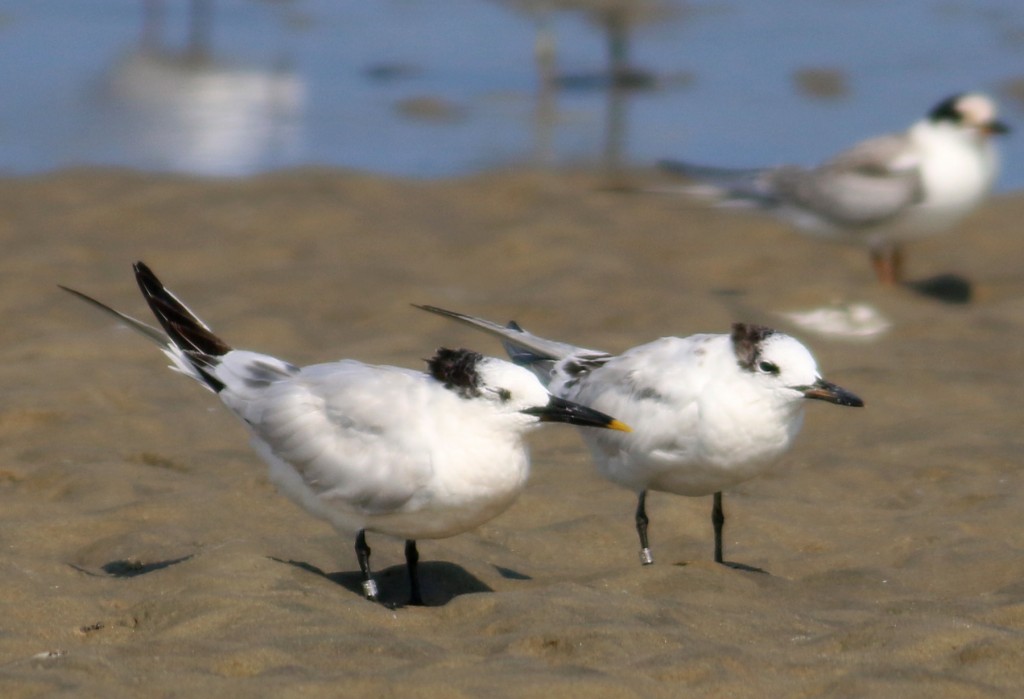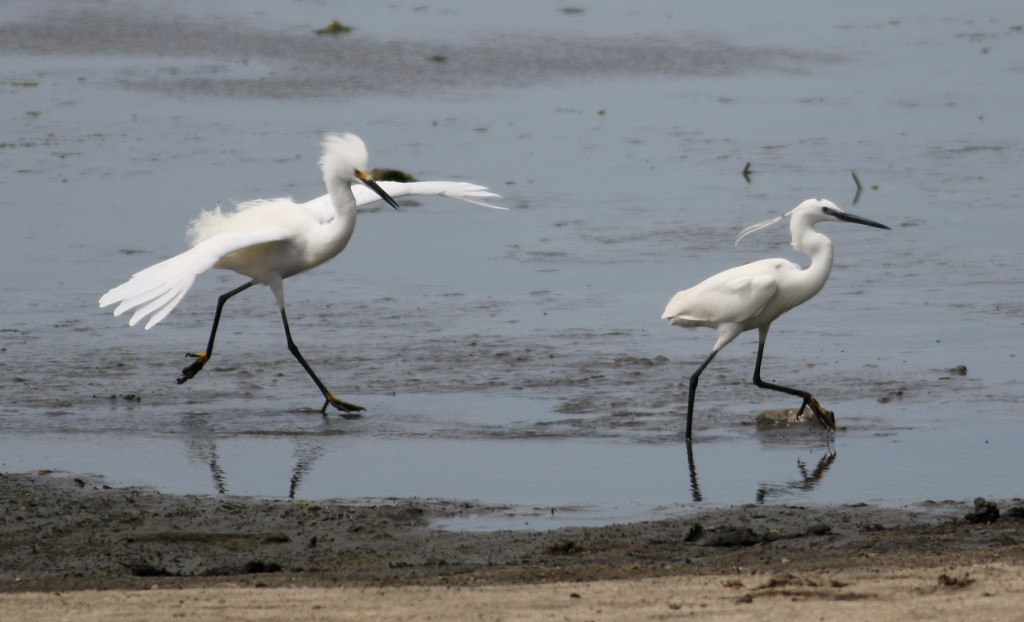This was an outstanding year for me, bird-wise. OK, I know…if we went back and looked at my best-of-2016 post, I probably said something similar for last year. And the year before. I don’t know if I broke any records in 2017 or even how many species I saw, but I do know that I had more fun than ever birding this year, and that is the point of this hobby, isn’t it? So what made it such a good year? Every year it gets harder to add new life birds, but this year I managed to add four new species locally (including one of my main nemesis birds), and the rarest of those rarities (Common Greenshank) didn’t even make this top-10 list. For me it was a good year for seeing Razorbills (just spend enough time patiently looking near the inlets in late winter, and you should see them) and American Golden-plovers (spend enough time scanning the shorebird flocks in late fall and they should eventually appear too). Other birds that stand out and that just missed the top-10 list include that interesting Red-necked Phalarope that stayed for just a few minutes in Whitesbog, my first NJ Yellow-headed Blackbird, an unexpected point-blank Dickcissel posing in the open ten feet away in Cox Hall Creek (a great bird while the camera was in the car…a theme for this year), the group of nine Black-bellied Whistling Ducks in Cape May, and finding our own unadvertised Snowy Owls and Long-eared Owls. Well, that’s a flavor of what the second ten would be.
OK, with that serving as prelude; here are my top ten. I’ll note that these are not necessarily the toughest species for the year, but the experiences that stand out for one reason or another.
#10. Little Gull. Little Gull is one of those species that is not necessarily easy to see, but one which I thought I would have seen by now, so Jeanine and I were definitely targeting this nemesis species last year (unsuccessfully) and were trying again this year. We took several trips to Cape May and to South Amboy, where they tend to show up most reliably, but were coming up empty. Then when one bird was reported at Spruce Run Reservoir for two days in early April, we decided to drive over. While scanning through the flock of gulls we had a couple ‘maybe’ birds (OK, let’s admit it; when we haven’t seen a species before, we tend to morph anything even remotely close to it into the desired species), but then the real thing showed up, and it was clear that finally we were looking at a Little Gull, with graceful flight, short rounded wings and dark underwings. I was thankful that we had to find it ourselves and that nobody was there to point it out to us. We ‘earned’ this bird.
#9. Poor Man’s Pelagic. In June our friend Bob asked us to join him on a ‘Poor Mans’ Pelagic’, boarding a fishing boat and scanning for pelagic species, which for us meant primarily Shearwaters and Storm-petrels. It was a wonderful day, with the three of us sitting on the upper deck in the sun, relaxing all by ourselves, searching for our targets while the fishermen were busy below. And we did get them. Unlike the commercial pelagic trips, we didn’t have spotters pointing out the birds, and the boat was not putting out chum to bring the birds in, so it wasn’t necessarily easy, but it was mighty rewarding. We found multiple Wilson’s Storm-petrels, and both Cory’s and Great Shearwaters. A winter version of this trip just a week or two ago yielded a pair of Razorbills and hundreds of Bonaparte’s Gulls but not any other unusual winter birds that we were hoping for. We’ll be trying more of these trips sporadically next year.
#8. Prothonotary Warblers. I like seeing Prothonotary Warblers, and this was a good Prothonotary Warbler year. The most memorable one was at Cloverdale in spectacular lighting, glowing like a bright golden incandescent bulb, reflected in, and feeding just above the water line (once again, no camera). We had another one nesting in Belleplain, a couple in Estell Manor Park, and multiple birds interacting and calling in the Huber Prairie Warbler Preserve. It’s always great to see and hear the birds at the same time, and they were making a call that we were unfamiliar with.
#7. Cape May Warbler day at Island Beach State Park. I tend to see Cape May Warbler each year, but it’s not a guarantee and I’ve never seen more than maybe two in any day, so it’s one of those species that brings a smile at each appearance. We had hoped to see some at Garrett Mountain in May, but came up empty, and I assumed that we missed our best chance for the year. Then on an otherwise uneventful September 11th at Island Beach, we came to the blooming bayside Groundsel Bushes, and Cape May Warblers were popping up everywhere. I’ve never seen double digit Cape May Warblers, but there they were, difficult to count accurately because they were mobile and nearly every warbler that we saw in that area was a Cape May Warbler. And where was my camera? In the car, of course.
#6. Garrett Mountain. It seems like every year Garrett Mountain enters my top ten list, and with good reason. Even though we only went there once this spring, it was a super day, highlighted by a cooperative Mourning Warbler, an odd orangey Scarlet Tanager, my only Lincoln’s Sparrow for the year (where were the sparrows this fall?), and the complete selection of expected eastern thrushes and most warblers. In other words, a typical Garrett day. But it became a special day when we were eating lunch and our friend Bob stopped by, saying that he was hoping to see a Canada Warbler. Well, don’t you know that we just saw one not two minutes ago from that very same lunch bench, so we just pointed it out to him. Then we asked if there was anything else he was looking for. Tennessee Warbler, he replied. Well the smiles probably stretched across our faces from end to end, because we just heard one from that bench a few minutes ago. We got up, strolled a short distance, and could hear it still singing clearly, high up in the canopy. Two requests, and two birds. We can’t always fulfill birding requests, but when we do, it feels special. Doing it back-to-back? Priceless. All while eating lunch.
#5. Spring in High Point. We were lucky enough to reserve a cabin in High Point State Park in early June. It was a little past peak migration time, but good timing for the higher altitude northern breeding birds. It was a wonderful four days, with Cerulean Warblers and Yellow-throated Vireos calling from above our porch, a Ruffed Grouse spotted with young birds crossing a trail, and a Great Horned Owl perched on a snag on the final evening. One drizzly day we drove up to the Shawangunk National Wildlife Refuge, where the fields were full of singing Bobolinks and Eastern Meadowlarks, and we were able to find previously reported Dickcissel and my lifer Henslow’s Sparrow. Above all, it was a great location, with excellent homemade food and super company. An unbeatable combination.
#4. Puerto Rico. I only took one ‘real’ vacation this year, with brother Rich for siete días en Marzo en Puerto Rico. I have posted extensively on this trip (start here for the reports), so I won’t repeat it all, but we were able to see or hear all of the seventeen Puerto Rican endemics, without any guiding. This trip became more meaningful after the island was hit by Hurricane Maria in September, causing massive damage. We were fortunate to visit the island when we did. I often wonder how different it is now at the locations that we visited.
#3. Black Terns in the Sedge Islands. It wouldn’t be a top 10 list without trips to the Sedge Islands. During the summer, that is my favorite place to go, but don’t tell anybody. All told, I think I took fourteen canoeing/birding/swimming/picnicking trips there, averaging nearly once per week. I’d go there more often if I could, but balancing the Sedges with other things in life counts for something too. We had not seen many Black Terns this year, and then on September 5, we hit hit the jackpot. Jeanine spotted the first one, which flew off to another sand spit where it was joined by another and then another and another until we spotted thirteen of them in view at one time! Later on we spotted two more at the inlet and six more while canoeing the rest of the islands, but we posted 15 birds not to be greedy and because we couldn’t be sure if those six were from the original group. This was by far the highest total of Black Terns that I had ever seen anywhere in one day. The next day 10 Black Terns were reported by others at Sandy Hook, so they were really on the move.
#2. Two Sandwich Terns + solar eclipse = a thrill. August 21 was an eventful day in the US. This was the day of the total solar eclipse, the first one to cross the entire US in 108 years. Here in NJ, the eclipse was only going to reach ~75% totality, but where better to experience it than in the Sedge Islands. As we were exploring the main flats in near isolation, we could sense the creeping darkness and with a little ingenuity viewed it safely as a crescent/shadow on the ground. That was certainly cool and different. When we reached the inlet, we were greeted by a flock of Royal Terns that was begging to be scanned for a hidden treasure. And eventually something did pop out…a Sandwich Tern! And a minute later, another one appeared nearby. Last year Jeanine and I were fortunate to find our first Sandwich Tern in NJ, and now the bar was raised another level by finding two. The cherry on the cake was that one bird was an adult and the other an immature bird, so we were able to study them together. The birds were very cooperative, mixing with the Royal Terns, and feeding and flying as if they knew they were the stars of today’s show. Well, I’m not sure what gets the top vote: two Sandwich Terns or a solar eclipse, but together they were a winning and memorable combination.
#1. Little Egret. Little Egret was a species that was long sought after in the state, but it hadn’t been detected until this year, when Cameron Cox spotted one at Heislerville. For one day. And then it disappeared. For a week. Then Jeanine and I went to Heislerville to enjoy the annual shorebird spectacle there, and the first bird to our left after we parked on the dike was none other than that same Little Egret! We didn’t even have to get out of the car, and there it was alongside the dike, just a few yards away. This time the bird stayed for three more days before disappearing again, giving many more birders the opportunity to enjoy it. This was the first Little Egret in NJ, species #479 for the state. What an unexpected thrill it was to re-find it. There it is again…my favorite birding word…’unexpected’!
<
